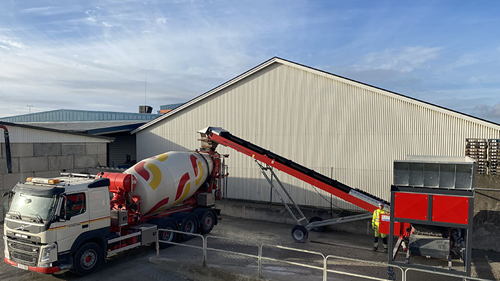

Projects
/
6/26/2025
From quarry to city: a simple idea with enormous impact
Circular economy, urban design and innovation for maintenance work on tree-pits with Mapestone Joint Ghost
A product developed for stone paving becomes an innovative solution for managing public green spaces. Thanks to the use of local gravel and Mapestone Joint Ghost transparent binder, Domodossola City Council tried out a new, sustainable way of keeping the city’s tree-pits permeable, clean, safe, tidy and functional, with concrete benefits for local residents, the environment, and the urban landscape.
When designing public spaces, street elements and green spaces, research into innovative solutions is a continuous process. Every day Mapei collaborate with sector professionals to develop materials and technologies that improve the quality and functionality of the urban environment. It was with this in mind that the world’s first trial of its kind was carried out in Domodossola (Northern Italy) in collaboration with Arte Natura, a company specialised in managing and maintaining public and private green spaces, the City Council and Assograniti, the association of producers of Valdossola natural stone.
Even though this intervention was the first of its kind, it has all the characteristics for it to soon become a solution that could be extended to both public and private use, thanks to its simple application and extraordinary utility.

The initial condition of deterioration of the planters
The idea: an innovative product at the service of open city spaces
It all started with a meeting and a highly innovative product: Mapestone Joint Ghost, a non-toxic, silane-terminated, transparent resin developed by Mapei. This binder has been designed for creating permeable and flexible architectural stone paving, providing an effective solution for consolidating joints filled with inert material such as gravel.
And from here, an intuitive idea: to use Mapestone Joint Ghost to improve management of the tree-pits in the centre of Domodossola, particularly in Via Marconi.
The objective? To obtain clean, tidy and functional surfaces without compromising on the health of nearby trees, the safety and wellbeing of residents and the cleanliness and aesthetics of the urban setting.

Spreading gravel onto the planters in contact with the ground
The advantages of the solution
The mix obtained with gravel and Mapestone Joint Ghost has numerous benefits, making it a practical and efficient alternative compared with traditional solutions.
- Simple application. The work is non-invasive and can be carried out quickly and application times are extremely short.
- Excellent ventilation for roots. The exposed layer of resin and aggregates allows soil to “breathe”, thereby guaranteeing the good health of plants whose roots tend to remain buried.
- Effective drainage. Rainwater and irrigation water filters through without any problem, thereby preventing stagnation and improving the health of roots.
- Easy to clean. Surfaces are tidy and easy to maintain, thereby reducing build-up of dirt and leaves.-
- Reduction of weeds. The exposed layer of resin and aggregate is permeable but well bound which discourages weeds from becoming attached, thereby reducing the need to apply herbicide, with resulting benefits from an economic, environmental and aesthetics perspective.
- Long-lasting urban decorum. The space between the tree trunk and the edge of the tree-pit remains neat and orderly over time, leaving the trunk free to grow.
- Bespoke look. Which type of gravel to use can be a personal choice in terms of colour and aesthetic effect, blending in naturally with the surroundings and colour identity of the urban context where adopted.

A collar was temporarily placed in the planter to protect the trunk of the plant and allow it to grow
Circular economy for Domodossola
Apart from the advantages mentioned above there is another benefit, one which is particularly pertinent to Domodossola and the Valdossola territory in general: the possibility to make valuable use of quarry waste, in line with the principles of a circular economy.
Thanks to the presence of numerous ornamental stone quarries in the area, it was possible to use locally-sourced crushed stone, thereby avoiding having to provision material elsewhere. This approach leads to a reduction in costs, a reduction in CO2 emissions from transport and giving waste material a new life, transforming it into a valuable element for urban furniture.

Preparing the mix with gravel and Mapestone joint Ghost silane-terminated resin
A model to be replicated for the future
This trial in Domodossola received a positive reception from the Local Council and represents a virtuous case-study to be divulged throughout the world of design where natural stone is used in landscape design and urban planning of public and private spaces.
This solution combines innovation, sustainability and care for urban decorum, providing a concrete example of how cutting-edge materials can improve the way residents live city spaces, thinking about the environment, aesthetics and the safety of local residents.

The final effect of the planter: the mixture of local gravel and Mapestone Joint Ghost silane-terminated resin was poured to the desired level











